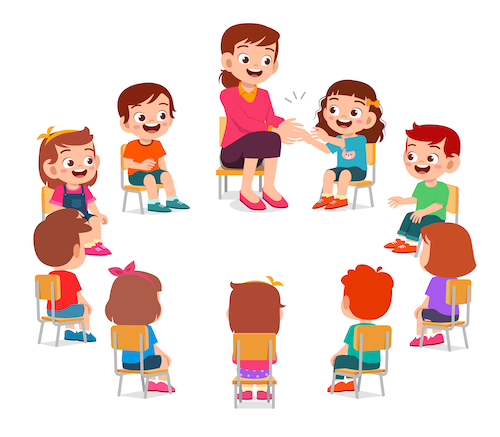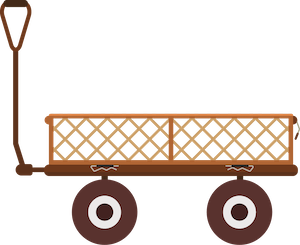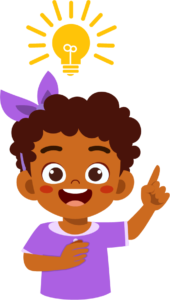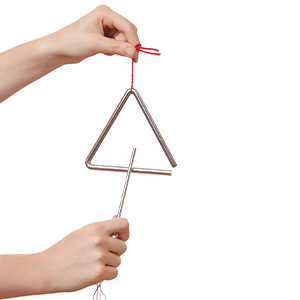
Prep. Lesson 29. Rhythm patterns II
- Woodblock Difficulty:
 Prior learning: None
Prior learning: None
![]()
Students will learn to recognise and reproduce rhythmic patterns and respond creatively with their own rhythmic motives.

 Success Criteria
Success Criteria
- I can echo rhythmic motives by clapping accurately.
- I can create my own four-beat rhythmic pattern in response to a prompt.
- I can keep in time with the established beat during activities.
- I can participate actively and experiment with different rhythmic patterns.
- Begin by clapping or tapping a steady beat to set the tempo. Before starting the activity, ensure the students can follow and feel the pulse.
- Clap a simple four-beat rhythmic motive (e.g., ta, ta, ti-ti, ti-ti).
- Invite a student to echo the pattern by clapping it back.
- Repeat with different rhythmic motives and rotate students to ensure everyone has a chance to participate.
- Clap a four-beat rhythmic pattern and ask the students to respond with their own unique four-beat pattern as an answer.
- Repeat the exercise, allowing students to take turns creating their responses.
- Praise students for their rhythmic responses and encourage them to experiment with different patterns while staying in time with the beat.
- Model creative examples to inspire varied responses.
![]()
Students will learn to sing and perform actions for the song, developing their ability to follow musical cues and participate in group singing.
- Sing the first verse to the students while demonstrating the actions (e.g., clapping hands, stomping feet).
- Encourage students to join in by repeating the actions and singing along.
- Gradually add more verses with different actions, such as nodding heads or turning around, to keep it engaging.
- Use visual aids or gestures to help younger children remember the lyrics and actions.
- Ask students to suggest their own actions for additional verses. End the activity by discussing how the song combines music with physical movement and how following instructions can create a fun, interactive experience.
![]() Lyrics
Lyrics
If you're happy and you know it, clap your hands.
If you're happy and you know it, clap your hands.
If you're happy and you know it, then you really ought to show it
If you're happy and you know it, clap your hands.
 Success Criteria
Success Criteria
- I can sing along to the song with the correct words.
- I can perform actions that match the song’s lyrics.
- I can suggest new actions to add to the song.
![]() Students will learn to move in coordination with a song, following directions and keeping the beat with the group.
Students will learn to move in coordination with a song, following directions and keeping the beat with the group.
- Begin by singing with the class to ensure students are comfortable with the melody and lyrics.
- Arrange the students in a circle and have them hold hands. Explain that they will move together in time with the beat and follow specific directions as they sing.
- Teach the class to recognise left and right directions by saying, "Turn to the left - do we remember which way is left?"
- Demonstrate the left direction by showing which way to face and move, helping students become oriented.
- Say, "Ready, steady, off we go!" and start singing.
- Guide the students to face left and move in a circle, stamping their feet to the beat as they sing.
- After completing the first verse, stop the class and explain that they will now circle to the right.
- Have the students face the right and move in a circle while singing the second verse.
- For the last verse, instruct the students to move towards the centre of the circle and then back out, following the lyrics "Everybody in…"
- Encourage students to keep moving with the beat as they go in and out of the circle, maintaining the rhythm and timing.
 Success Criteria
Success Criteria
- I can sing while moving in time with the beat.
- I can follow directions to move left, right, and in and out of the circle.
- I can stamp my feet to the beat while singing and moving.
- I can participate actively and stay coordinated with the class.
![]() Lyrics
Lyrics
Circle to the left, old brass wagon, Circle to the left, old brass wagon,
Circle to the left, old brass wagon. You're the one, my darlin'.
Circle to the right...etc
Everybody in... etc

![]()
Students will learn to identify familiar songs by listening closely to clapped rhythm patterns.
 Success Criteria
Success Criteria
- I can listen carefully to a clapped rhythm and try to recognise the song.
- I can identify songs based on their rhythm patterns.
- I can participate in rhythm recognition activities confidently.
- I can work with others to clap and identify rhythms in familiar songs.

- Explain to the students that they will listen carefully to a rhythm that you will clap and then try to identify the song based on that rhythm.
- Emphasise that listening closely to rhythm patterns helps recognise songs, even without the melody.
- Select a simple and familiar song that the students know well, such as "Rain" or "Bounce High."
- Ensure the song has a distinct rhythm, making it easier for students to identify.
- Start by clapping the rhythm of the chosen song without singing or providing any hints.
- After clapping the rhythm, ask the students if they recognise the song.
- Allow students to raise their hands and share their guesses. Encourage them to think about what the rhythm reminds them of.
- If students guess correctly, confirm the answer and applaud their listening skills.
- If they don’t guess correctly, clap the rhythm several times, breaking it down into smaller sections to help them. If necessary, give them clues, such as a gesture or word!
- Repeat the exercise with other familiar songs, clapping the rhythm and encouraging students to identify each one.
- Rotate through various rhythms, gradually increasing the challenge with less obvious rhythm patterns as students become more confident.
![]() Students will learn to differentiate between beat and rhythm while playing percussion instruments and singing.
Students will learn to differentiate between beat and rhythm while playing percussion instruments and singing.


 Success Criteria
Success Criteria
- I can hold and play the woodblock and triangle with proper technique.
- I can play the beat on the woodblock in time with the class.
- I can play the rhythm on the triangle in time with the class.
- I understand the difference between beat and rhythm in a song.
- Show students the triangle and woodblock, explaining that each has a special sound.
- Hold the woodblock securely and strike it with a beater, creating a crisp, clear sound. Demonstrate how to hold it properly so that the sound rings out clearly.
- Hold the triangle by its string, allowing it to vibrate freely. Show students how to use the beater to strike the triangle to produce a clear, pleasing tone.
- Allow a few students to come up and try holding and playing each instrument, ensuring they are comfortable with the technique.
- Have the class sing “Ickle Ockle” together to ensure they know the song well and can keep in time.
- Invite a volunteer to play the woodblock in time with the beat while the class sings.
- Remind the student to keep a steady beat and match their playing to the group’s tempo.
- Rotate volunteers so several students can play the beat on the woodblock.
- Remind students that the way the words go in a song is called the rhythm, and this can be played on an instrument.
- Demonstrate playing the song's rhythm on the triangle as the class sings.
- Highlight the difference between keeping the beat and following the rhythm of the words.
- Invite a volunteer to hold the triangle and play the rhythm while the class sings.
- Rotate volunteers, allowing several students to practice playing the rhythm on the triangle, giving each a chance to work on timing and coordination.
![]() Miss Molly shows ways to keep the beat on your body.
Miss Molly shows ways to keep the beat on your body.
Suggested lessons
Y1. Beat II

Y1. Beat III

Y1. Beat IV

